Ted Nield on the first English translation of the first ever mining textbook – Agricola’s De Re Metallica, 1556.
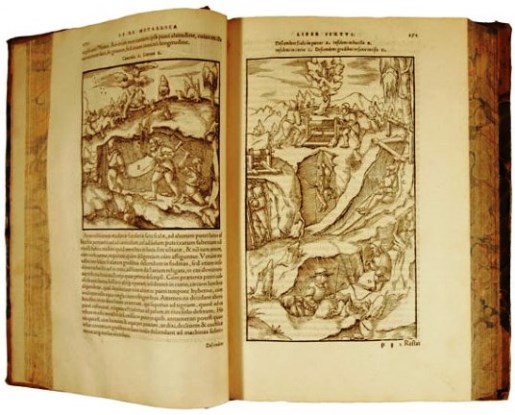 On 20 December 1907, a young American couple – Bert and Lou - moved into Red House, Hornton Street, in the Royal Borough of Kensington, not far from Holland Park - the sort of area where a modest flat can now set you back £2 million. It was a rambling, old (1835) eight-room, two storey dwelling with a huge garden and high walls all around - the site now occupied by Kensington Town Hall. They were in their early 30s, and had met as students at Stanford University. They were intellectual, athletic, and both geologists. They were also very rich.
On 20 December 1907, a young American couple – Bert and Lou - moved into Red House, Hornton Street, in the Royal Borough of Kensington, not far from Holland Park - the sort of area where a modest flat can now set you back £2 million. It was a rambling, old (1835) eight-room, two storey dwelling with a huge garden and high walls all around - the site now occupied by Kensington Town Hall. They were in their early 30s, and had met as students at Stanford University. They were intellectual, athletic, and both geologists. They were also very rich.
Picture: Agricola’s De Re Metallica 1556, showing typical page with woodcut illustrations, the large number of which delayed publication until after the author’s death. Wikimedia Creative commons
Like many geologists in the extractive industries, they had already circumnavigated the world. Bert had spent much time in Western Australia and both had spent years in China, where they had weathered the Boxer Rebellion (guns in hand) and learned Mandarin (which they spoke together whenever they needed to keep things from the servants).
Stanford
Bert was a little older - one of Stanford University’s very first student crop, and a Senior when they had met. They had married as soon as Bert got his transfer from the Australian goldfields to his new posting in China. He was by that time a fully-fledged mining engineer, partner in prestigious London Wall firm Bewick Moreing, and a man of impressive industrial and academic credentials. She, meanwhile, had developed her remarkable facility with languages, mastering not only Chinese but also Latin.
Picture: Waldemar Lindgren FGS (1860-1939), pictured in 1912. Lindgren gave the young Bert his first geological job, working for USGS. From the Society’s archives.
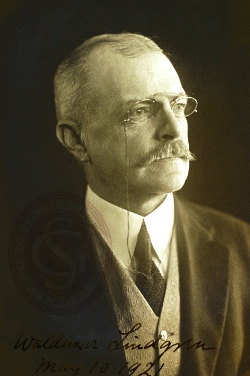 Neither had ‘come from money’, though Lou's modest banking background was more well to-do than Bert’s; he had been born in a two-room weatherboard cottage in Iowa, to a blacksmith father who sold farm tools. All their money was their own - built through workaholic Bert's considerable geological, mining and business acumen. Their uncomfortable years were now over; but despite his success, something gnawed at him.
Neither had ‘come from money’, though Lou's modest banking background was more well to-do than Bert’s; he had been born in a two-room weatherboard cottage in Iowa, to a blacksmith father who sold farm tools. All their money was their own - built through workaholic Bert's considerable geological, mining and business acumen. Their uncomfortable years were now over; but despite his success, something gnawed at him.
Bert and Lou both knew that before it can be found in the ground, wealth must first be found in the mind, by applying our understanding of the Earth to find, win and refine the useful minerals on which civilization depends. For the successful, this might lead to great personal fortune – and by 1914, Bert could lay claim to an estimated $4 million - quite a lot of money, even today. But what mattered to them, now they were established, was respect.
Like many men and women whose scientific work allies them to the ancient occupations of mining and building, Bert felt his industrious tribe had never really enjoyed the respect it properly deserved. ‘Mining’ was brutish, manual, labouring - trade. 'Engineering' evoked the grease-monkeys of heavy industry, wielding the wrenches that the class-ridden British (among whom Bert now resided) scornfully named after them. Yet it was precisely such people who made wealth, and hence advanced society, possible. Living in Britain’s snobbish Imperial capital undoubtedly strengthened these feelings in the patriotic Republican; whose initials ‘HC’ had long ago earned him the nickname ‘Hail Columbia’.
Rational basis
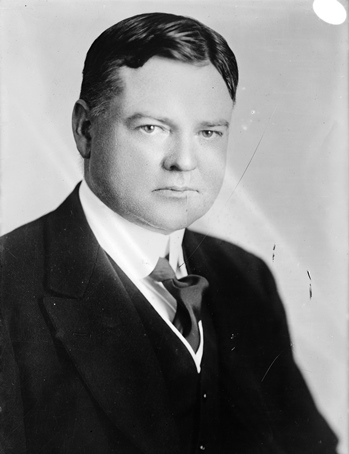 Mining had long embraced the scientific revolution. Geology provided it with a rational basis for improving prospectors' chances of success, and boosting their confidence. Yet unlike petroleum, whose industrial exploitation began in the later 19th Century, metal mining was immeasurably older, and its culture very different - emerging from the Middle Ages with deeply ingrained traditions of occult knowledge and protective secrecy. Yet, such an ancient heritage should, they thought, only enhance the regard in which the profession was held – if only it were better known.
Mining had long embraced the scientific revolution. Geology provided it with a rational basis for improving prospectors' chances of success, and boosting their confidence. Yet unlike petroleum, whose industrial exploitation began in the later 19th Century, metal mining was immeasurably older, and its culture very different - emerging from the Middle Ages with deeply ingrained traditions of occult knowledge and protective secrecy. Yet, such an ancient heritage should, they thought, only enhance the regard in which the profession was held – if only it were better known.
Picture: Bert (1874-1964), pictured at about the time his translation of De Re Metallica appeared. Wikimedia Creative commons
Older by far than the scientific tradition, mining's know-how had been assembled by professional guilds, jealously guarding their secrets, mostly in continental Europe. Nobody seemed to appreciate (thought Bert and Lou) quite how ancient this understanding was - how much lore had come down from time immemorial, much of it trial-and-error knowledge that had now, belatedly, received the endorsement of scientific understanding (plus much that did not).
However, luckily, one single source-work had preserved all that accumulated knowledge of the ancients; one compendious manual, covering prospecting, mining, refining and smelting and providing a snapshot of everything that men of the 16th Century knew - or thought they knew - about wresting wealth from the Earth’s grip. This was the book that gave the science of mineral exploitation pedigree.
It was also a summary of geological understanding - at least, of that part of it which concerned winning useful minerals. It was the miner’s Bible. And yet, almost nobody paid it any attention. There was not even an English edition.
Georg Bauer
The book was De Re Metallica, by 16th Century German scholar Georg Bauer (1495-1555) - more widely recognised by his Latinized byline, Georgius Agricola. His last, enormous work had had to wait until 1556 - a year after his death - to be published, so numerous (289) were the woodcut illustrations it required.
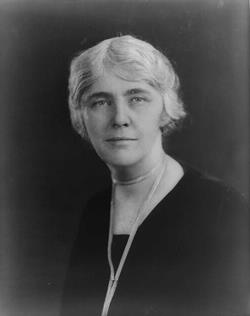 Lou had first had the idea, in 1906. In London, centre of world metals and minerals trading, with great libraries all around them, why should they not embark upon a long-overdue English translation of Bauer's seminal masterpiece?
Lou had first had the idea, in 1906. In London, centre of world metals and minerals trading, with great libraries all around them, why should they not embark upon a long-overdue English translation of Bauer's seminal masterpiece?
Picture: Lou Henry, (1874-1944), geologist and linguist. Translating Agricola’s great work was originally her idea.
They were, after all, eminently qualified. Lou was now a first-rate linguist. Both were geologists. Bert had by now compiled his early lectures, given in Columbia and Stanford universities, into a book entitled Principles of Mining (1909), which was becoming the standard textbook. Both were fully experienced in prospecting, mining, refining and smelting. Far from needing permission - who better was there to do this? Neither was easily daunted; though had they known more (as many before and after them have said) they might never have even begun.
Translating Agricola proved a Herculean task. Bauer, knowing words in his native tongue for the tools, techniques and rock features he needed to explain, had no Latin vocabulary with which, writing as 'Agricola', he could express himself. So he had coined new Latin words; words that occur nowhere else but in De Re Metallica. To figure out what they meant, the translators had to back-translate from Bauer’s Latin neologisms into Middle High-German mining jargon, and then from there, into English.
Beginning in earnest in 1908, the job took the couple four years. But how was it to be published, and by whom? And who was to pay for it? By the time they were ready to go to press, Bert had garnered subscriptions from his industrial and financier friends to pay for the project, even before publication became an issue. The project by then had grown in Bert’s mind far beyond a mere translation of the original. He now envisaged a full-sized (and fully annotated) facsimile - right down to original typefaces and hand-made paper. They had taken on staff to help. It was monumental.
Slippery road
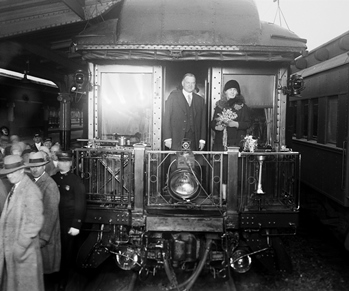 But Bert was an astute and persuasive financier, and after years of arm-twisting, Bert and Lou finally succeeded in bringing one of the great scientific works of the late Mediaeval period from out of the shadow. Their 1912 rendition remains the one authoritative version of De Re Metallica in English today, and its clarity of expression (and extensive learned footnotes and annotations, putting Agricola into the context of world mining history) mark it as a true classic of translation.
But Bert was an astute and persuasive financier, and after years of arm-twisting, Bert and Lou finally succeeded in bringing one of the great scientific works of the late Mediaeval period from out of the shadow. Their 1912 rendition remains the one authoritative version of De Re Metallica in English today, and its clarity of expression (and extensive learned footnotes and annotations, putting Agricola into the context of world mining history) mark it as a true classic of translation.
Two years after it appeared, War broke out in Europe. From their home in London, Lou and Bert worked 14-hour days organising relief work in France and Belgium, repatriating 120,000 Americans stranded by the war. He didn't know it yet, but Bert’s glittering geological and mining career was over. He had, as he put it, set foot “upon the slippery road of public life”.
In 1929, 31st President Herbert Clark Hoover with his First Lady, Lou Henry Hoover, forsook the Red House for the White House.
Wisely, Bert and Lou kept up the habit of conversing privately in Chinese.
Picture: Bert and Lou Henry Hoover, during the Presidential campaign ‘whistlestop’ tour in 1928. Bert was elected in 1929, just in time to be overtaken by the Great Depression. The next geologist to get anywhere near the presidency would be Secretary of State (2001-05) Colin Powell, who graduated in Geology from the City College of New York in 1958. Wikimedia Creative commons
Further reading
- Nash, George H, 1983: The Life of Herbert Hoover (Vol 1), The Engineer 1874-1914. W W Norton & Co., New York ISBN 039301634X 968pp.
* Ted Nield is Editor of Geoscientist.